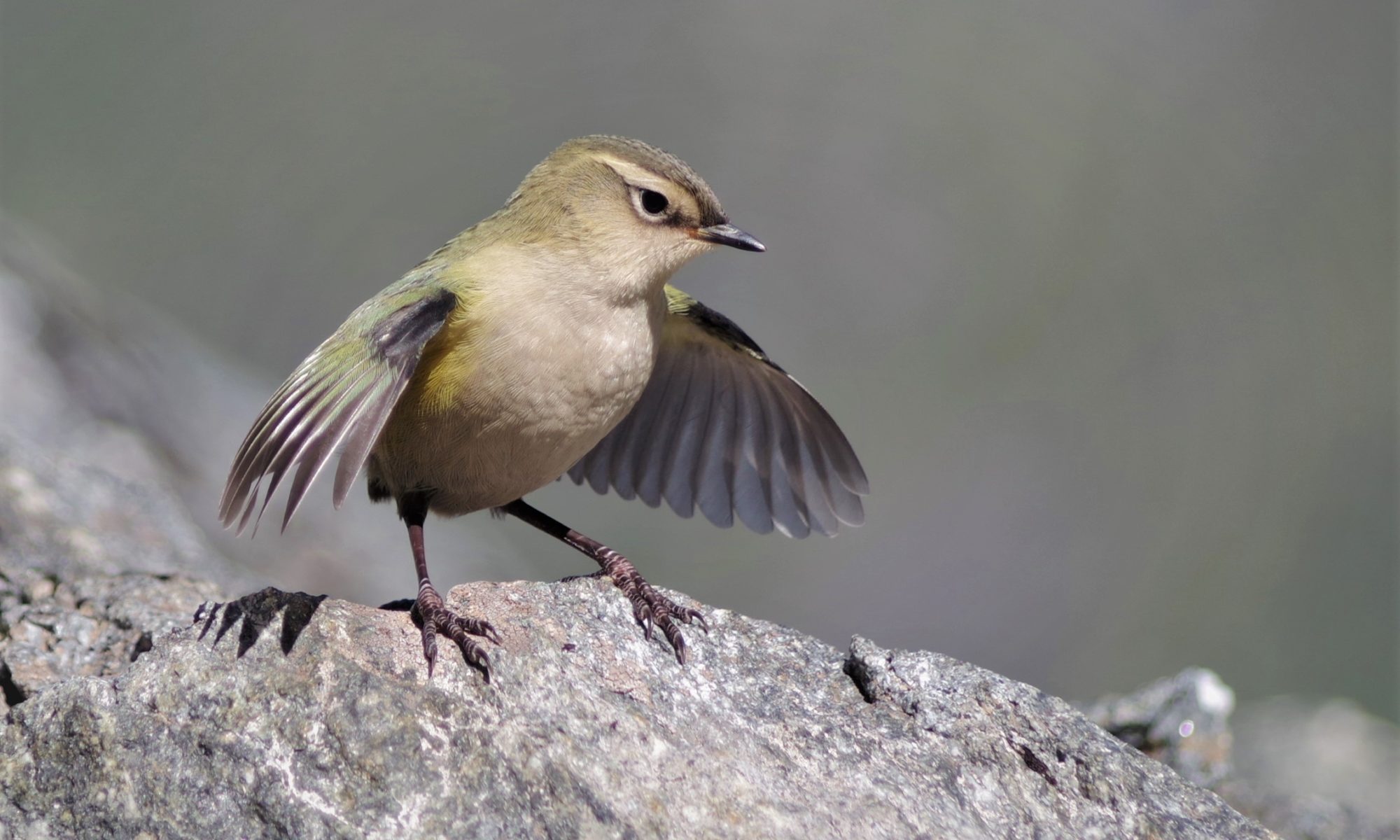Since the installation of ABT’s alpine predator control programme for the protection of rock wren Xenicus gilviventri, stoats have been recorded in traps at 1200 m elevation (refer to spatial distribution map below) in areas of rock wren habitat and they are still being caught during the winter months.
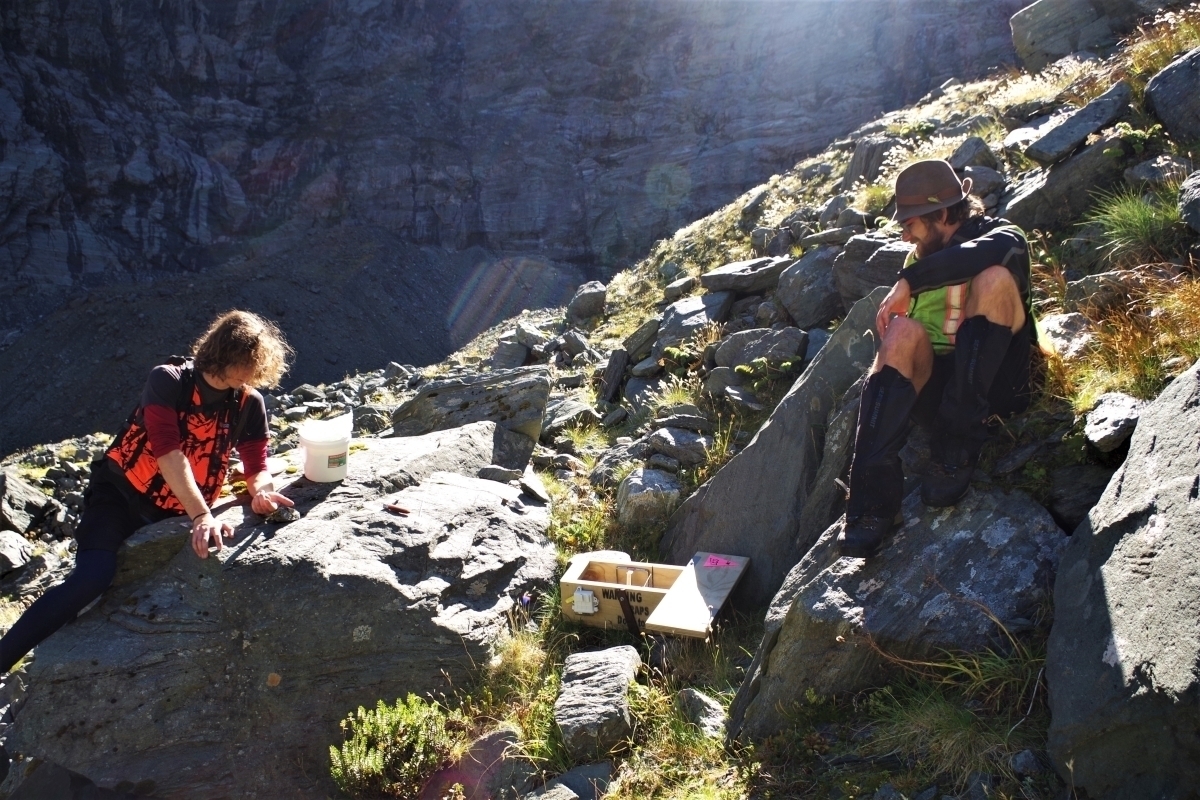
During this winter, Celium remote monitoring technology has shows that invasive mammalian predators are still on the move during the winter and are being caught within the alpine environment where indicative rock wren territories have been identified.
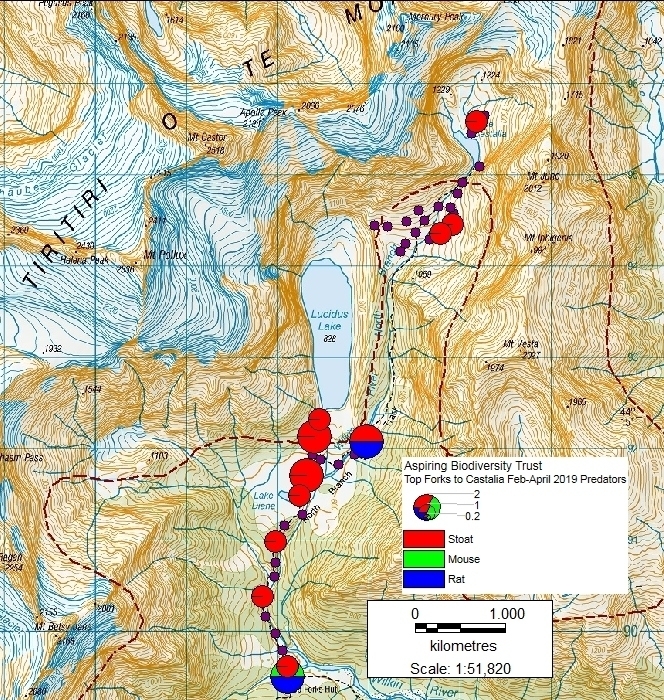
The real time data shows current available trap coverage at Lucidus/ Castalia on 8 August 2019 is mostly reduced at lower altitudes and representing a threat to rock wren territory (southern scree area above Lake Lucidus). The red symbols display trap triggers and the green symbols identify the remaining trap coverage available to passing predators. The data illustrate that there is currently no imperative to replace bait (probably due to low temperatures in the alpine environment or lack of predator food source), and that servicing requirements are only determined by available un-sprung trap coverage at this stage (potentially effective rock wren protection).
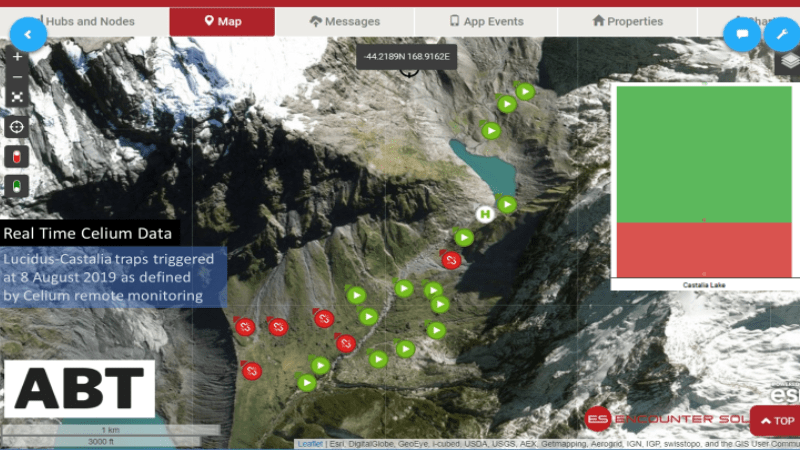
The Celium remote technology provides additional information on alpine predators such as commuting activity and time of capture. Most trap triggers appear to occur at dawn between 06:00 – 08:00 h at 1000 to 1200 metres.
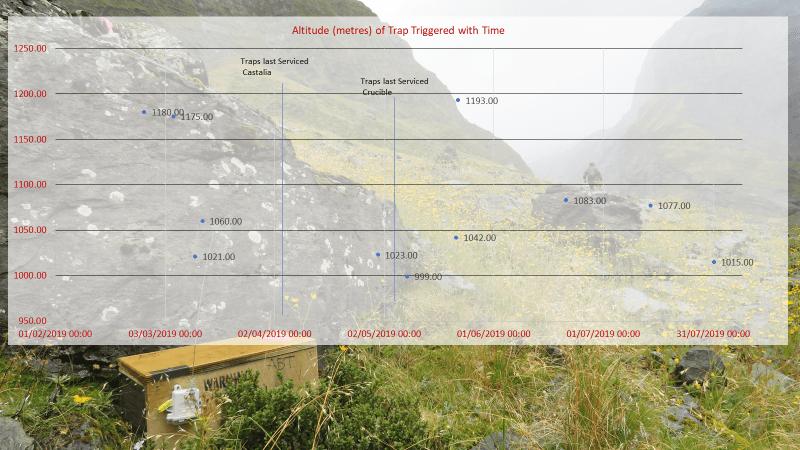
Climate conditions are recorded showing decreasing daily temperatures towards winter at all three Hub Stations. Overall winter conditions are cooler at Castallia/ Lucidus relative to the Crucible Basin.
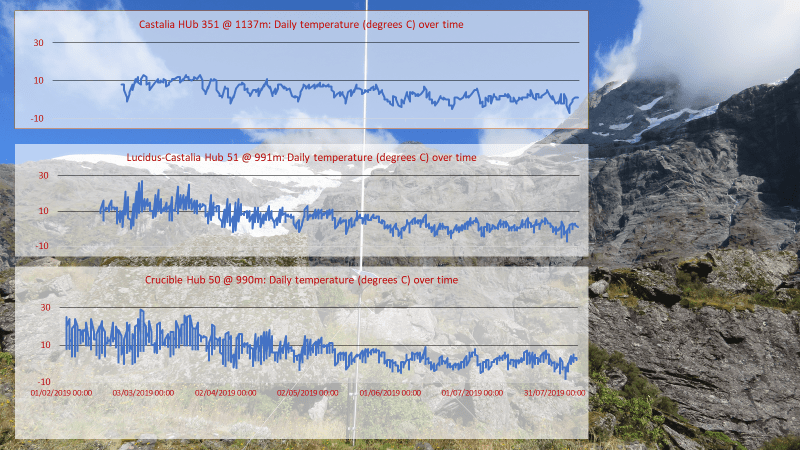
We look forward to servicing alpine traps and resuming rock wren monitoring this coming season, once baseline temperatures have warmed up and the rock wren are out of their winter torpor. Hope to see this juvenile from last year!
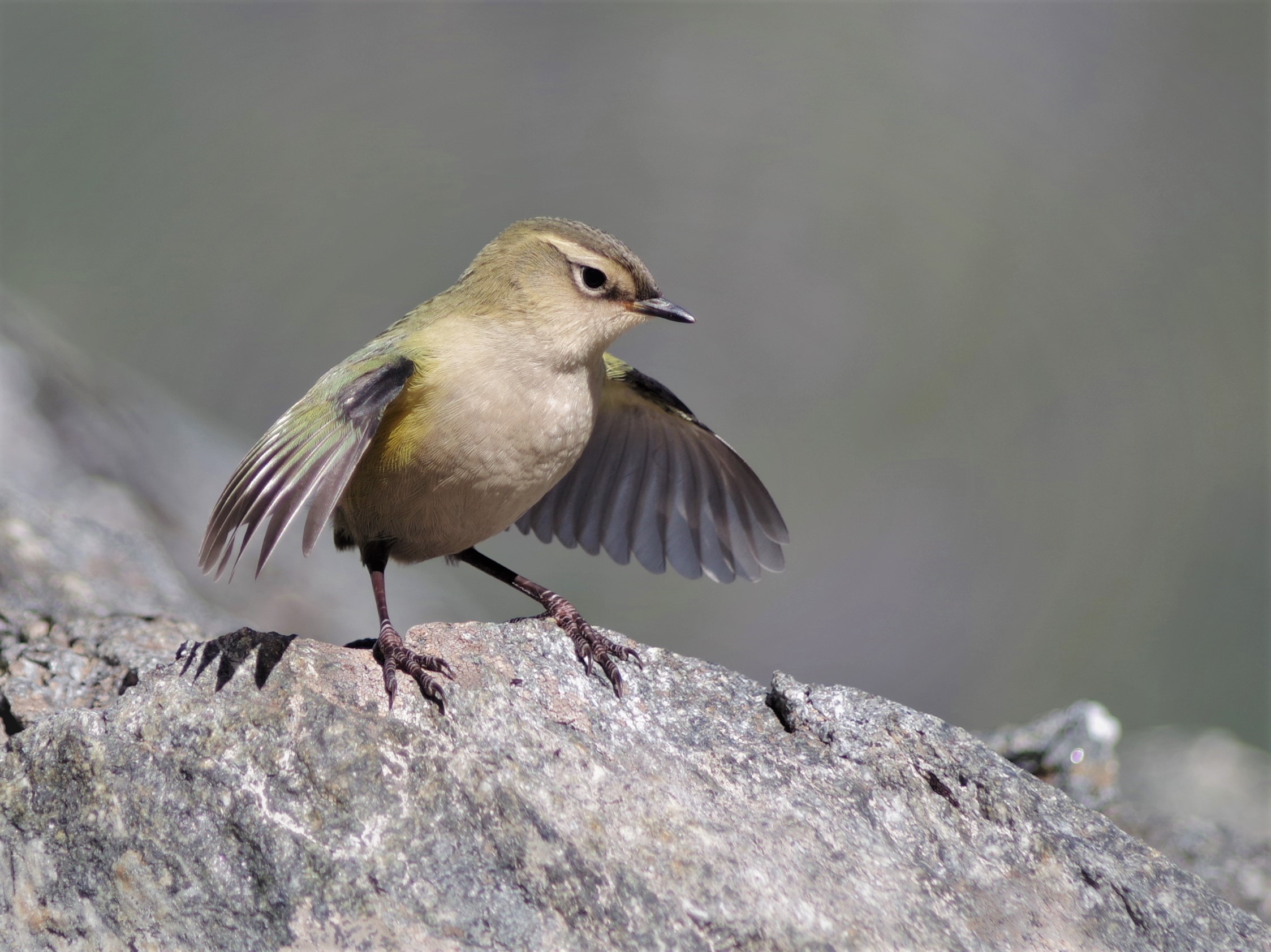
Acknowledgements
With thanks to all our volunteers, partners and the following funders; WWF, the Tindall Foundation, Otago Regional Council, Oceana Gold and the Otago Community Trust.
References
O’Donnell, C F J, Weston K A, Monks J A. (2017). Impacts of introduced mammalian predators on New Zealand alpine fauna. New Zealand Journal of Ecology 41: 01-22.
Weston, K A, O’Donnell C F J, van Dam-Bates P, Monks J M (2018). Control of invasive predators improves breeding success of an endangered alpine passerine. International Journal of Avian Science. Vol 160, Issue 4.

